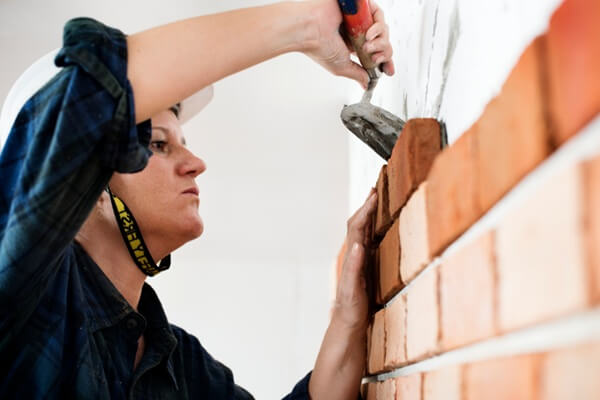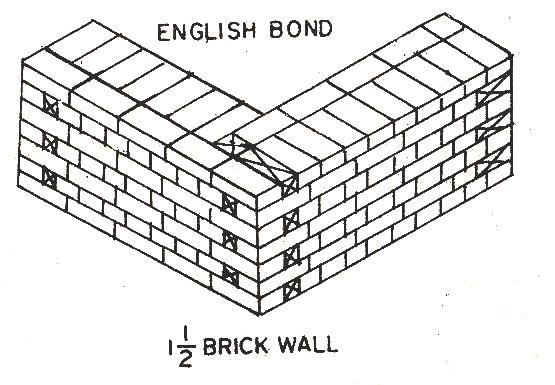In architecture, the way bricks are arranged in a wall significantly impacts both the structure’s strength and its visual appeal. This arrangement, known as a bond, is more than just stacking bricks. It’s a methodical pattern that enhances stability and creates a unique aesthetic for the building.
Brick bonds play a crucial role in distributing weight evenly across a wall, reducing the risk of cracks and ensuring durability. Architects and designers use various bonding techniques to achieve specific goals, whether it’s creating a striking design, improving thermal efficiency, or increasing resilience.
Some popular patterns include the running bond, known for its simplicity and horizontal alignment, and the Flemish bond, which alternates headers and stretchers for a balanced look. The herringbone pattern, often seen in decorative features, adds texture and character to a space.
Choosing the right bond requires considering factors like the wall’s purpose, material availability, and the architectural style of the project. For instance, contemporary designs often opt for clean, minimal patterns, while traditional builds might favor intricate layouts that highlight craftsmanship.
Understanding these techniques allows architects to merge functionality with beauty, ensuring that the walls not only support the structure but also elevate its design. Whether for a modern home or a historic restoration, selecting the right bond pattern can leave a lasting impression.
Types of Brick Bonds
Types of Brick Bonds in Architecture
The arrangement of bricks within a wall can dramatically influence both the structure’s stability and its visual identity. Different brick patterns are used to meet the unique needs of architectural designs, balancing function and aesthetic charm.
- Running Bond: This is one of the simplest patterns, with bricks laid in rows where each brick overlaps the one below it. It’s commonly used in modern designs for its clean and straightforward look.
- Flemish Bond: A mix of alternating stretchers and headers in each row, this layout adds texture and depth to walls. It’s often chosen for projects where craftsmanship is a priority.
- English Bond: Known for its durability, this pattern alternates rows of headers and stretchers, creating a robust and timeless appearance suitable for traditional builds.
- Herringbone: A popular choice for decorative elements, this arrangement creates a zigzag pattern, adding dynamic energy to floors, pathways, or feature walls.
- Stack Bond: Bricks are aligned directly on top of each other. While less stable structurally, this layout is perfect for sleek, contemporary designs where minimalism is key.
Selecting the right layout depends on the architectural vision, the desired balance of form and strength, and the function of the wall. By blending creativity with practicality, architects can use these patterns to enhance both the structural integrity and the aesthetic of a project.
Stretcher Bond
The stretcher bond is a widely recognized method for arranging bricks, particularly in projects where simplicity and functionality are key. This pattern is characterized by bricks being laid lengthwise, with each unit overlapping the one below it.
This layout is highly efficient, often used in the construction of single-thickness walls. Its strength lies in the way the bricks interlock horizontally, providing stability for non-load-bearing walls, garden features, and facades. Architects and builders favor this design for its minimal waste and ease of assembly, making it an economical choice for many projects.
Visually, the stretcher bond creates a seamless, linear look that complements modern and contemporary designs. Its clean, horizontal alignment is ideal for creating a sense of length and space, which is particularly useful in narrow or constrained areas.
When integrated thoughtfully, the stretcher bond can also serve as a backdrop that highlights other architectural features, like windows or doorways. Its understated elegance ensures that it supports the overall design without overpowering other elements.
By balancing efficiency with a straightforward aesthetic, the stretcher bond continues to be a practical and versatile choice in architectural projects of all scales. Whether for functional walls or stylish facades, this pattern remains a cornerstone of thoughtful design.
Header Bond
The header bond is a classic arrangement that highlights strength and uniformity. In this pattern, bricks are laid with their shorter sides, or headers, facing outward. This layout is often chosen for walls that need to be particularly sturdy, as the bricks are placed perpendicular to the wall’s length, creating a robust and tightly knit structure.
This type of bond is frequently used in double-thickness walls, ensuring stability and longevity for architectural projects requiring a solid base. Its compact design makes it an excellent choice for retaining walls, arches, and structures where durability is a top priority.
Aesthetically, the header bond creates a repetitive, grid-like appearance that lends itself well to traditional designs. The uniformity of the headers offers a neat, balanced visual appeal, perfect for accentuating the craftsmanship of the wall while maintaining its functionality.
Architects value this bond for its ability to merge practicality with a timeless look, especially in projects where both appearance and resilience are key considerations. By selecting the header bond, designers can achieve a combination of strong support and clean design, making it an essential tool in the architectural repertoire.
English Bond
The English bond is a timeless pattern, celebrated for its combination of strength and symmetry. This arrangement alternates rows of headers and stretchers, creating a visually striking and structurally sound design. The alignment provides a perfect balance of durability and aesthetic appeal, making it a popular choice for walls requiring added support.
The alternating layers enhance the distribution of weight across the wall, ensuring long-lasting stability. This feature makes the English bond ideal for large structures like bridges, industrial buildings, and retaining walls where resilience is paramount.
From a visual perspective, the English bond exudes a rhythmic and harmonious look. The interplay between the shorter headers and longer stretchers creates a design that is both practical and pleasing to the eye. It is often associated with traditional architecture, but its versatility allows it to be incorporated into modern projects as well.
By utilizing this bond, architects achieve an effective solution for merging beauty with function. The thoughtful arrangement not only reinforces the structure but also enhances the overall design, making it a go-to choice for projects where performance and style are equally important.
Flemish Bond
The Flemish bond is a sophisticated brick arrangement known for its intricate pattern and balance. It alternates headers and stretchers within the same row, creating a checkerboard effect that is both decorative and structurally effective. This method is highly valued in architecture for combining durability with refined aesthetics.
By interlocking bricks in this way, the Flemish bond provides excellent strength, making it suitable for walls that require both stability and visual appeal. It is frequently used in residential and civic buildings, where an elegant yet enduring design is desired.
The visual rhythm created by this pattern adds character to structures, making it a favorite for facades that aim to blend functionality with artistry. Architects often use it to enhance the architectural language of historical or traditional buildings, while also adapting it to contemporary designs.
This bond exemplifies how thoughtful brickwork can elevate a building’s exterior. The Flemish bond achieves a perfect synergy between beauty and practicality, underscoring its importance in creating enduring architectural works. Its enduring charm continues to make it a preferred choice for projects that prioritize both form and function.
Stack Bond
The stack bond is a minimalist and contemporary brick arrangement known for its straightforward alignment. In this layout, bricks are placed directly above one another, creating a grid-like appearance. This design emphasizes clean lines and simplicity, making it a preferred choice for modern architectural projects.
While the stack bond offers a sleek aesthetic, its structural strength is lower compared to other arrangements, as there is no overlap between bricks. This characteristic makes it more suited for non-load-bearing walls, facades, and decorative elements where visual impact is prioritized over heavy support.
Architects often use the stack bond to achieve a crisp, uniform look that complements modern design principles. It pairs exceptionally well with materials like glass and metal, enhancing the overall sleekness of a structure.
To improve stability, reinforcements such as steel rods or mortar are often integrated into the design. This approach allows the stack bond to maintain its striking appearance while ensuring adequate support for the intended application.
The stack bond highlights how simplicity can be powerful in architecture, offering a bold and modern statement for buildings that prioritize elegance and innovation in their design.
Conclusion
Understanding different types of brick arrangements is key to creating structures that are both visually appealing and durable. From the classic strength of English and Flemish layouts to the sleek, modern look of the stack bond, each option brings unique benefits to architectural projects. Whether you’re designing a timeless home or a contemporary commercial space, choosing the right pattern can significantly impact the final result.
At Millhawlk Design & Architecture, we specialize in blending innovative solutions with timeless design principles. Our team is dedicated to crafting spaces that not only meet your functional needs but also reflect your personal style. If you’re considering a project that involves brickwork or other architectural elements, our expertise in architecture and interior design ensures that every detail is handled with care. Let us help you turn your vision into a reality!


